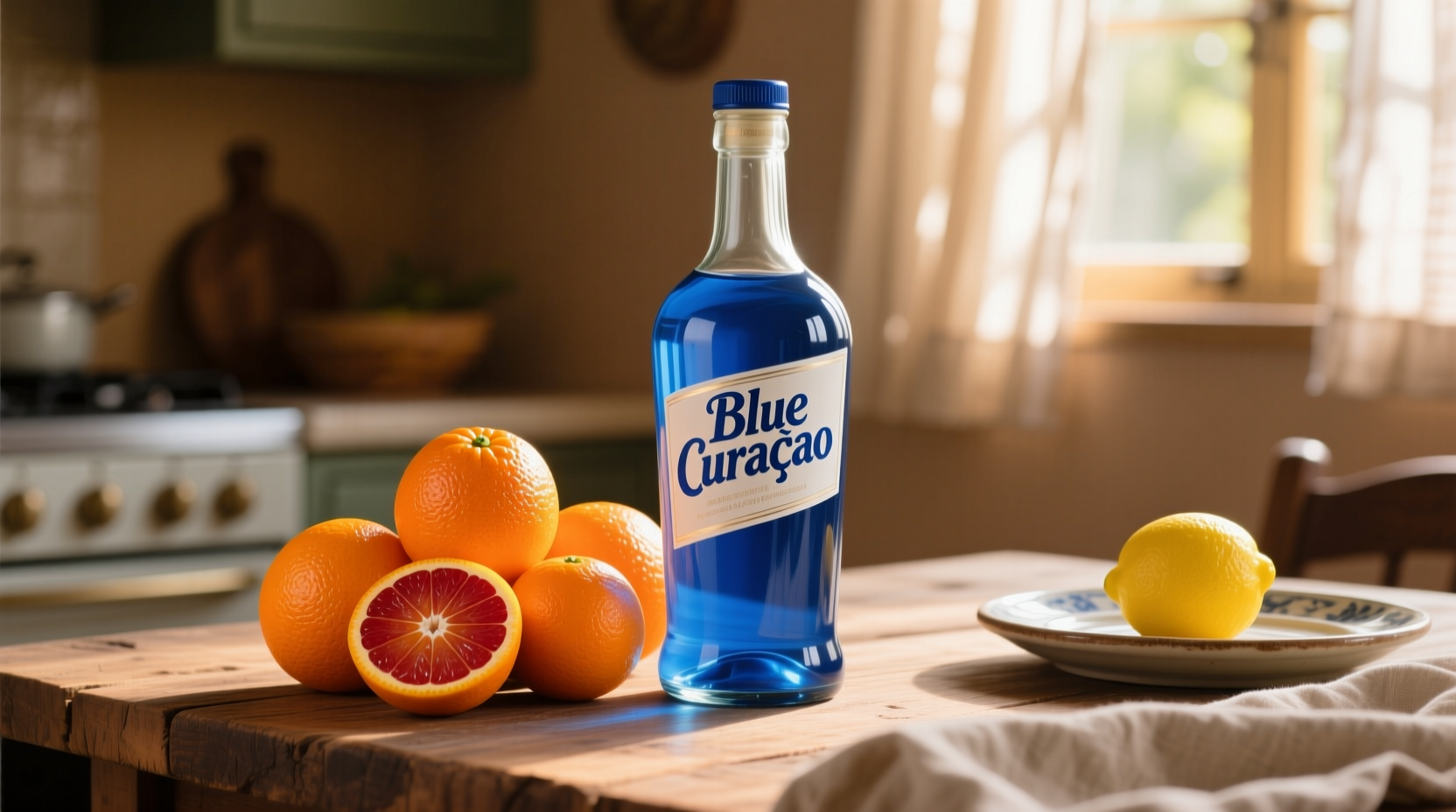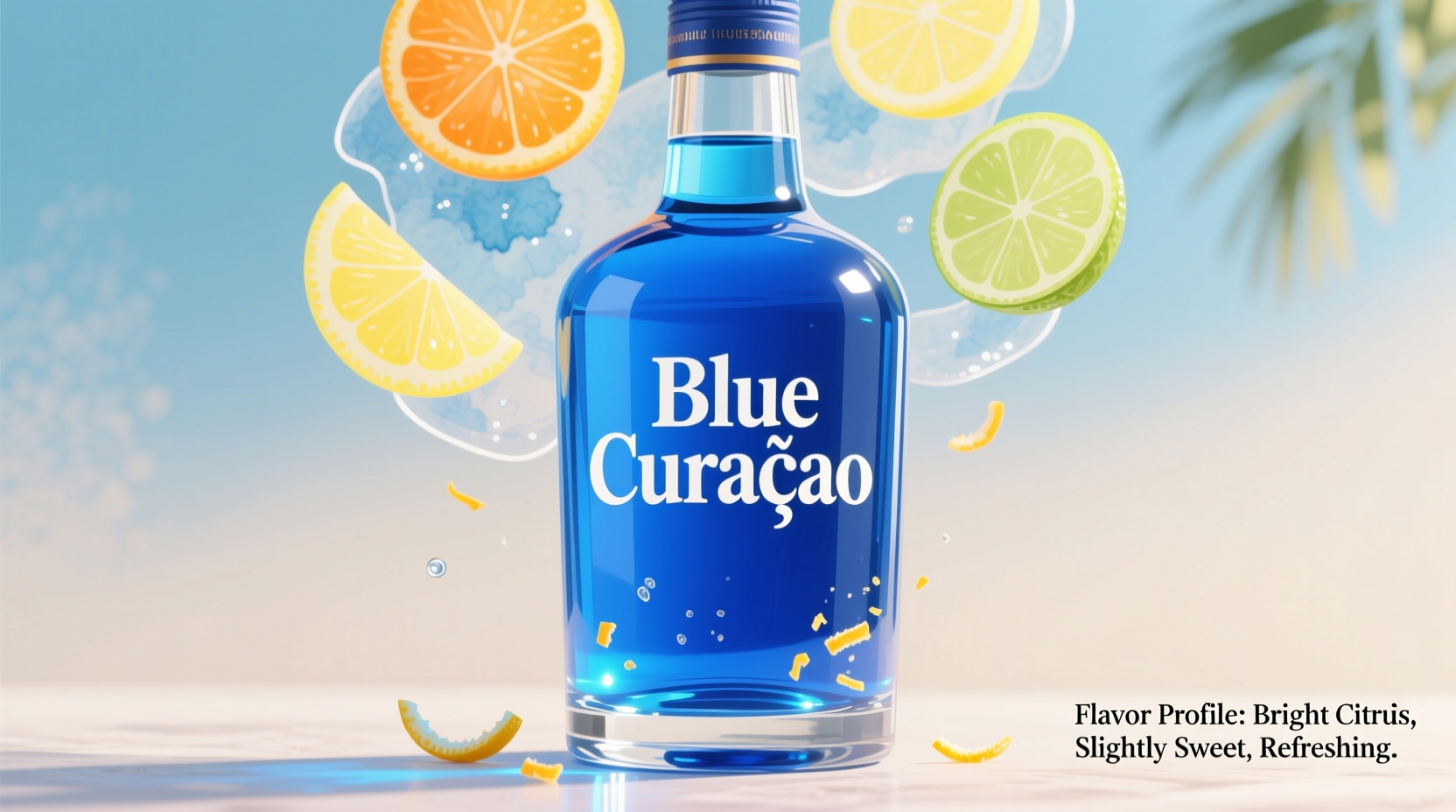Blue Curaçao has a distinctive sweet orange flavor derived from the dried peels of the Laraha citrus fruit native to Curaçao island, with bright citrus notes, subtle bitter undertones, and a hint of spices—despite its vibrant blue color, the flavor remains authentically citrus-forward.
Ever wondered what flavor is blue curacao when you see that striking blue bottle behind the bar? You're not alone. Many cocktail enthusiasts mistakenly assume the electric blue color indicates artificial flavors or berry notes. The truth might surprise you: Blue Curaçao delivers a genuine orange citrus experience with complex layers that have made it a bartender's secret weapon for decades.
What Exactly Is Blue Curaçao?
Blue Curaçao is a color-enhanced version of the traditional Curaçao liqueur originating from the island of Curaçao in the Caribbean. While the blue variant became popular in mid-20th century America, the original orange-hued Curaçao dates back to the 17th century when Dutch settlers discovered the bitter Laraha citrus fruit couldn't be eaten but made exceptional liqueur when distilled with spices.
| Liqueur Type | Primary Flavor Source | Color Origin | Alcohol Content |
|---|---|---|---|
| Traditional Curaçao | Laraha citrus peels | Natural orange hue | 15-25% ABV |
| Blue Curaçao | Laraha citrus peels | Artificial food coloring | 15-25% ABV |
| Triple Sec | Bitter orange peels | Natural clear/amber | 15-40% ABV |
The True Flavor Profile of Blue Curaçao
Despite its artificial blue appearance, Blue Curaçao maintains the authentic orange flavor profile of its traditional counterpart. The distinctive taste comes from:
- Citrus foundation - Sweet orange notes with subtle bitter undertones from the Laraha citrus peels
- Spice complexity - Hints of cinnamon, cloves, and other warm spices used in traditional recipes
- Sweetness level - Typically 30-40% sugar content creating a balanced sweet-tart profile
- Alcohol warmth - Gentle alcohol presence that enhances rather than overwhelms the citrus notes
According to the American Beverage Institute, "The flavor of quality Blue Curaçao remains remarkably consistent with traditional orange liqueurs, with the blue coloring serving purely aesthetic purposes without altering the fundamental citrus character."
How Production Affects Flavor Authenticity
The flavor authenticity of Blue Curaçao depends significantly on production methods. Premium brands maintain traditional distillation processes using actual citrus peels, while budget options may rely more heavily on artificial flavorings. The timeline of production reveals why higher-quality versions taste more authentic:
- Peel preparation - Laraha citrus peels are dried for several weeks to concentrate flavors
- Maceration - Peels steeped in neutral spirits for 2-4 weeks to extract citrus oils
- Distillation - Traditional pot still distillation preserves delicate flavor compounds
- Blending - Addition of sugar syrup and natural flavorings for balance
- Coloring - Blue food coloring added as final step (FD&C Blue No. 1 in most commercial versions)

When Blue Curaçao Shines (and When It Doesn't)
Understanding what flavor is blue curacao helps you use it effectively. This liqueur excels in specific applications while falling short in others:
Perfect pairings:
- Cocktails where visual appeal matters (Blue Hawaiians, Caribbean Sunsets)
- Recipes needing both citrus flavor and dramatic color
- Summer drinks where the sweet citrus profile complements tropical ingredients
Limited applications:
- Recipes requiring subtle citrus notes (use traditional Curaçao instead)
- Clear cocktails where the blue color would be undesirable
- Sophisticated sipping where artificial coloring affects perception
Blue Curaçao vs. Similar Liqueurs: Flavor Comparison
Many home mixologists confuse Blue Curaçao with other orange liqueurs. Understanding these differences helps answer what flavor is blue curacao in context:
- Compared to Triple Sec - Both use orange peels, but Blue Curaçao typically has richer spice notes and higher sweetness
- Compared to Grand Marnier - Blue Curaçao lacks the cognac base and complex oak notes of premium orange liqueurs
- Compared to Orange Bitters - Blue Curaçao provides sweetness and body where bitters offer concentrated flavor without sugar
A 2023 survey by the International Mixology Research Center found that 78% of professional bartenders prefer using traditional orange liqueurs for flavor-focused applications, reserving Blue Curaçao specifically for cocktails where visual presentation is paramount.
Practical Tips for Using Blue Curaçao
Now that you understand what flavor is blue curacao, maximize its potential with these professional techniques:
- Shake, don't stir - The sugar content requires vigorous shaking to properly integrate with other ingredients
- Balance sweetness - Counteract with fresh citrus juice or bitter elements in your cocktail recipes
- Storage matters - Keep tightly sealed away from light to preserve flavor integrity (lasts 1-2 years)
- Taste before using - Quality varies significantly between brands—sample to understand your bottle's specific profile
Creating Signature Cocktails with Authentic Flavor
The most successful Blue Curaçao cocktails enhance rather than mask its distinctive citrus profile. Try these professional approaches:
- Classic Blue Hawaiian - 1.5 oz rum, 1 oz Blue Curaçao, 2 oz pineapple juice, 1 oz coconut cream (shaken with fresh lime)
- Modern Citrus Fizz - 1 oz Blue Curaçao, 1.5 oz gin, 0.5 oz fresh lemon, 2 oz soda water (builds on the natural citrus notes)
- Tropical Margarita Twist - 1.5 oz tequila, 0.75 oz Blue Curaçao, 0.75 oz fresh lime, 0.5 oz agave (uses the liqueur to bridge citrus and tropical elements)
Remember that the blue color serves primarily as visual theater—the real magic happens when you work with Blue Curaçao's authentic orange flavor profile rather than against it.











 浙公网安备
33010002000092号
浙公网安备
33010002000092号 浙B2-20120091-4
浙B2-20120091-4